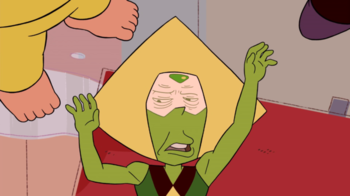@DarthAsthma:
I think you have to educate me on that since I'm not really sure how jump's editing is limited to producing generic forgettable works when it comes to action/shonen pieces. I also have a hard time imagining jump messing around with what is already good pacing. If anything I'd assume that the reason for failing of a lot of the lately pieces very much resulted from a lack of understanding(from the author's side) of how to pace and put a story together in the face of rankings and the weekly shedule. So most of the time they all try to play it way too safe.
Also how is there no benefit to comparing? If there is a substantial difference in editing methods that produces a work of very similar concepts to many of jumps shonen series and yet can be a lot more engaging I feel there is definitely benefit to compare and discuss but for now, I'm curious throw some of your knowledge at me.
Well the generic forgettable works comment is a matter of some debate, to be sure, but Jump editorial's process of deciding what stays or goes is very rigorous, based on a sampling of 1000 reader surveys each week. These are used to decide both the order of the table of contents and the overall popularity of the series. Even if a series has what is considered good pacing, if it doesn't match the expectations of those 1000 readers it means nothing. From there the process does have a fair parallel, with editorial and the authors discussing what to do to either capitalise on what works or to move away from what doesn't. This can go from well-executed changes like Reborn!'s switch to focusing on battles, or completely erroneous decisions, like Belmonde le Visiteur's frankly panicked change of direction to something that got just as bad a reception as before.
But that's not all I'm driving at here. Jump and Magazine have very different circulations. Jump's is around 3 and a half million copies printed each week, and Magazine's is more like 1 and a half million. This is where the change in approach is. Jump's ridiculous circulation means that the anthology is almost always the focus, and that a series that isn't competing there will perish, regardless of volume sales. I mean… If you're not One Piece, you're not selling comparable numbers to Shonen Jump. That's Shueisha's moneymaker, and that's all that matters.
Now, Magazine. Magazine's much lower circulation means that a series gets a second venue to prove itself, as volume sales become much more important. So a series can have a less competitive, more thoughtful pace to it and rake it in on the collected edition. It's a battle on two fronts that Jump doesn't allow. Hence why a lot of Shonen Jump series'll play it breakneck and Magazine or Sunday can be a lot smarter with how things play out.
Ugh, I'm meandering. I've gotta be clear, I'm not attacking anything here, just pointing out that it's often better to let a series stand on its own merits rather than compare it to a creative environment with a different focus than its own. Nanatsu no Taizai will probably work great in Magazine, if it were in Jump though... It could be a different story. It's not made for there, it's made for Magazine. It's... well, it's simple, innit. It's working where it belongs, and that's why I think a comparison doesn't benefit either side in this thing.
I dunno, Jump just kept coming up in here and I found it ill-suited to the topic when there's much more interesting things in play with this series than how it's not like a different anthology's failed titles.
(oh and on the playing it safe comment? Have you read any of the New Power Generation in Jump? Sure, none of them are action, but there's your proof that Jump authors aren't always playing it safe, having great success with four disparate series)









 [/hide]
[/hide]

